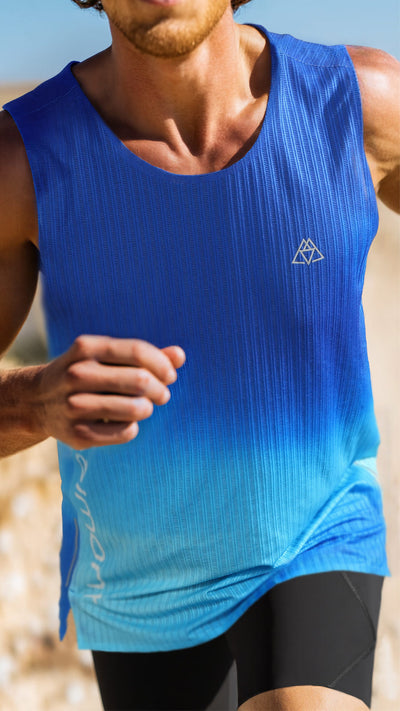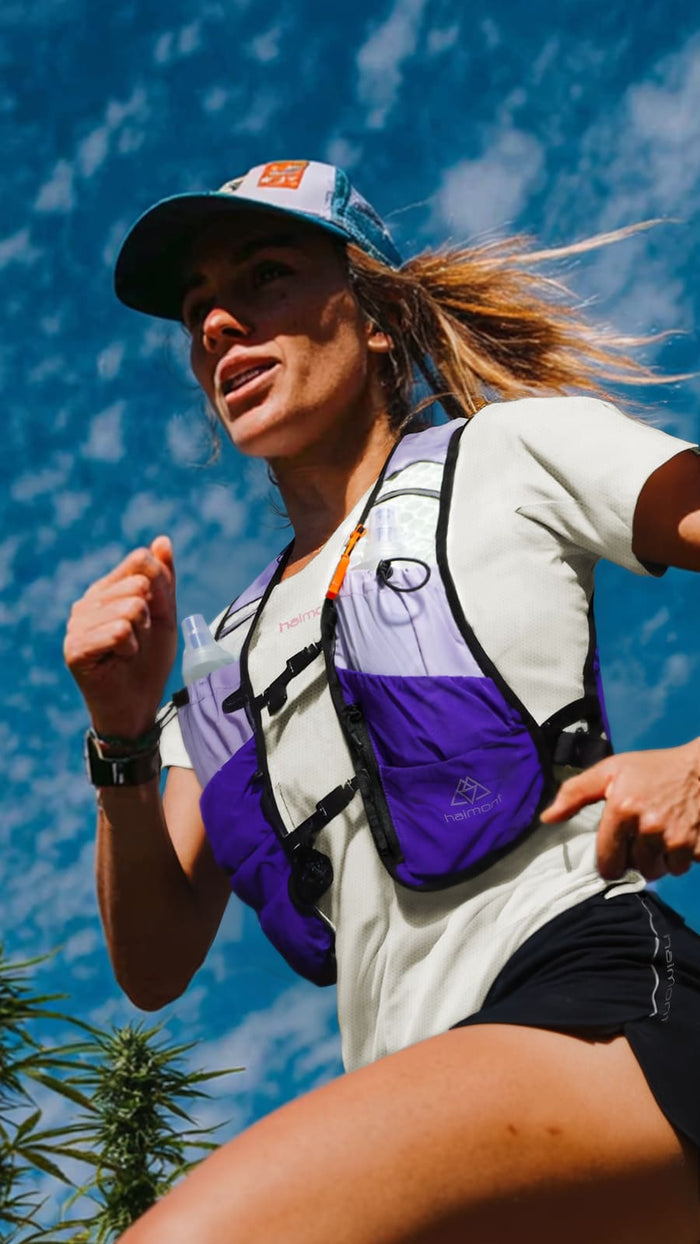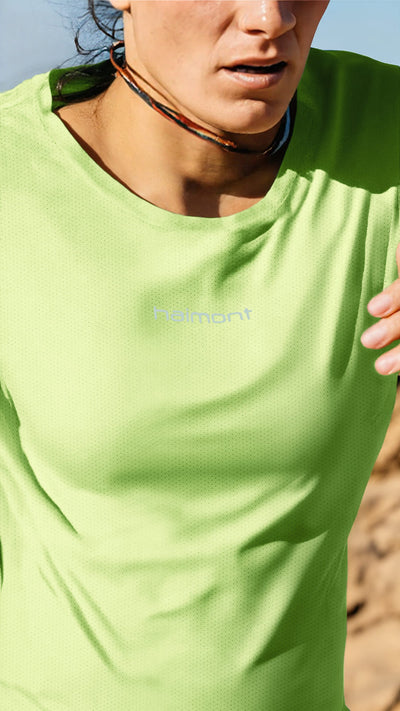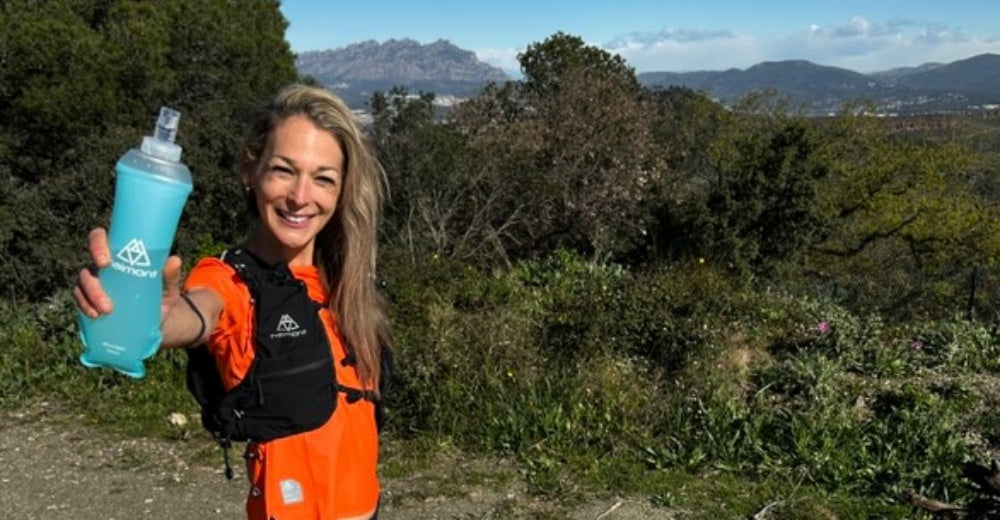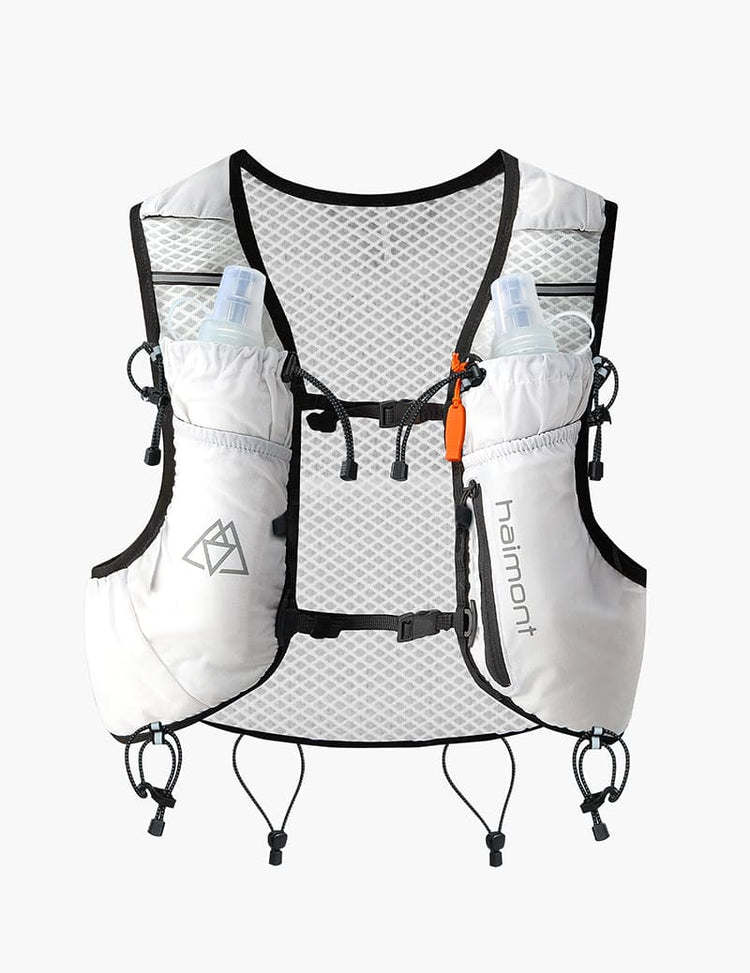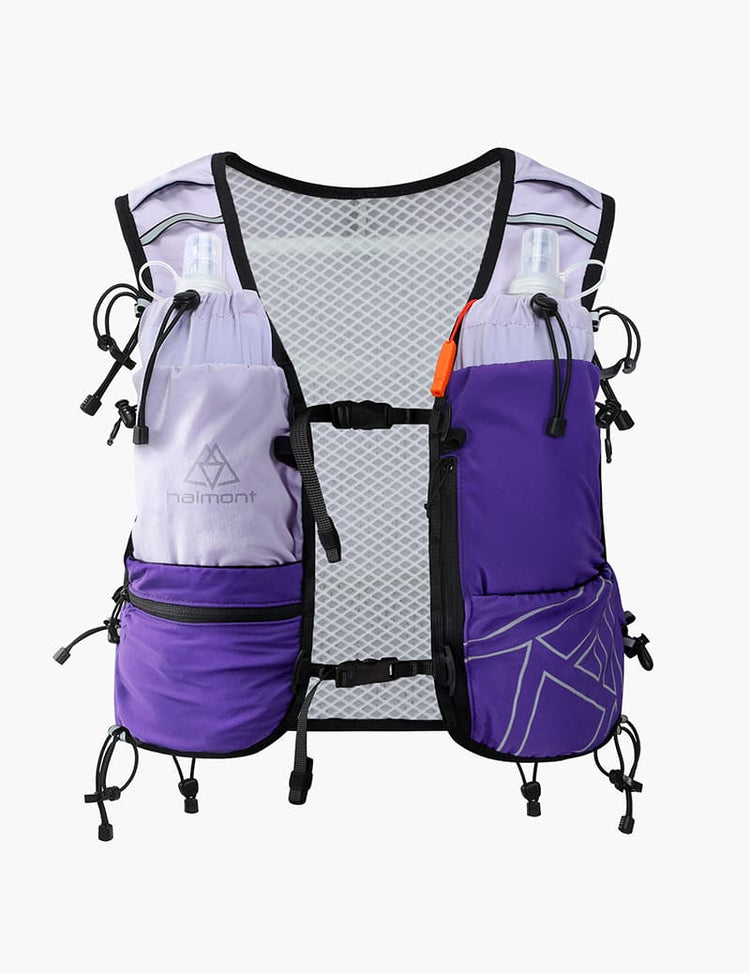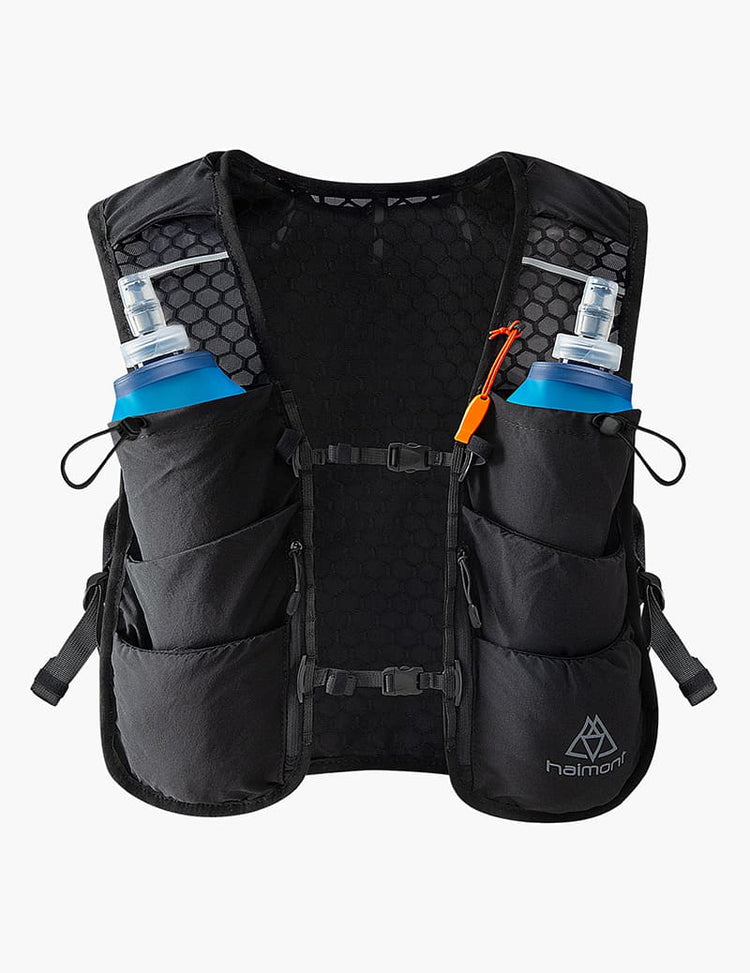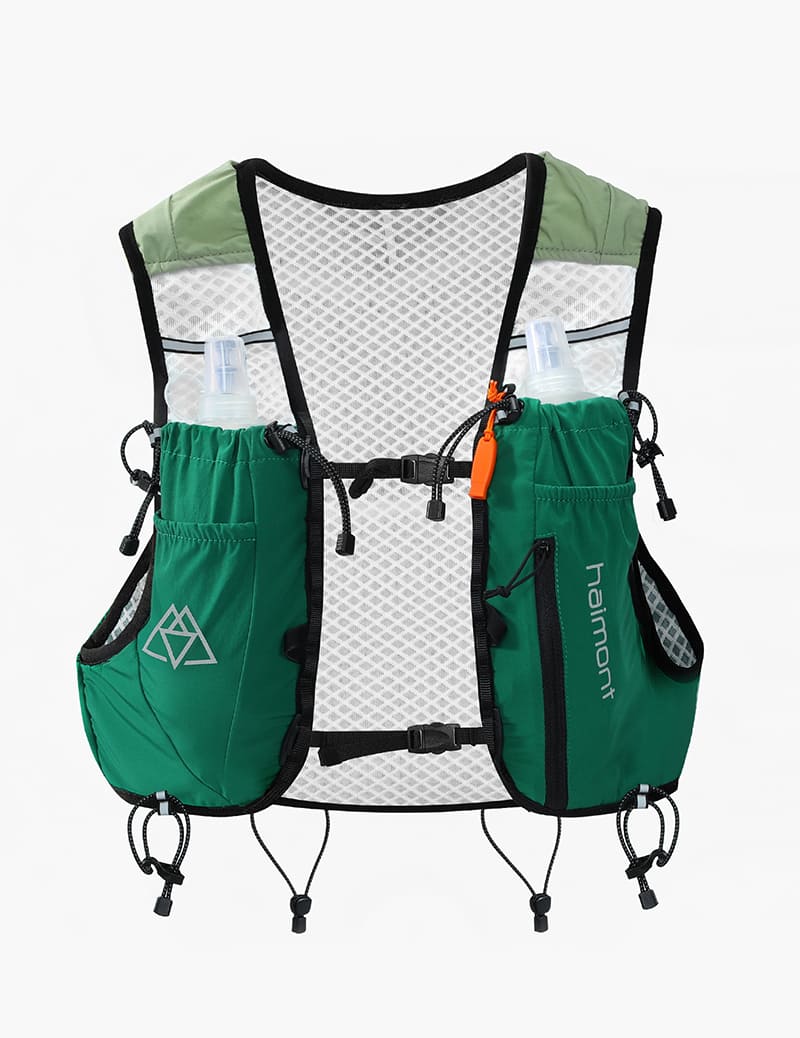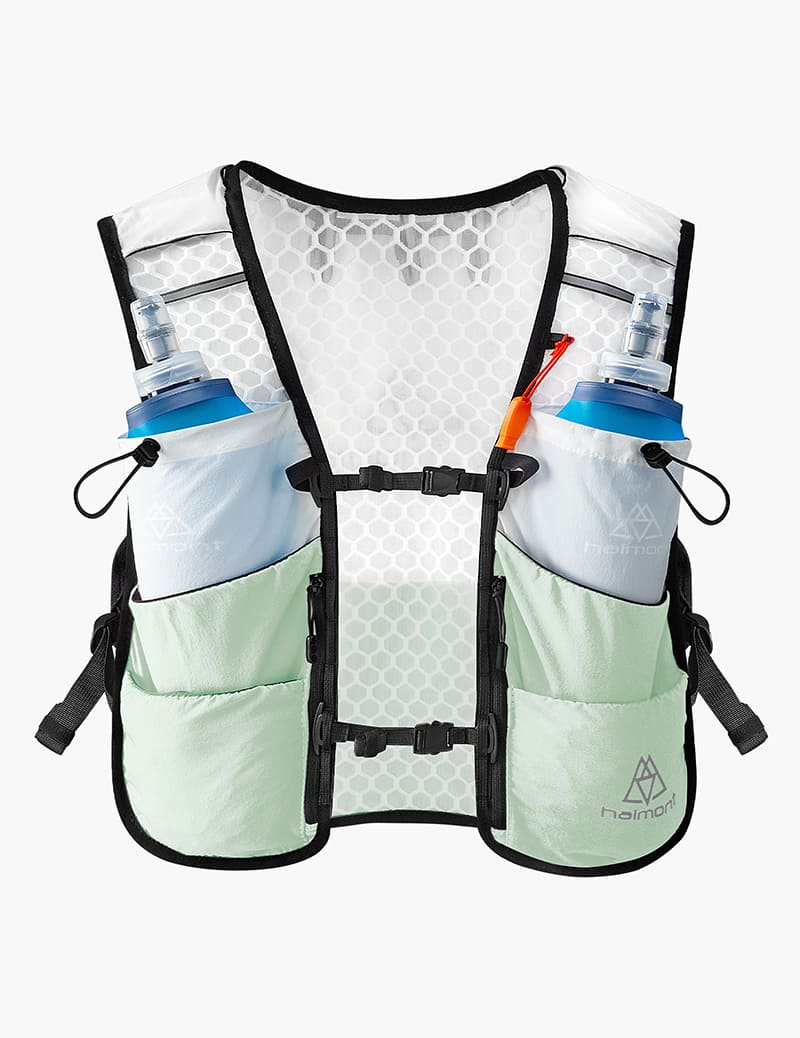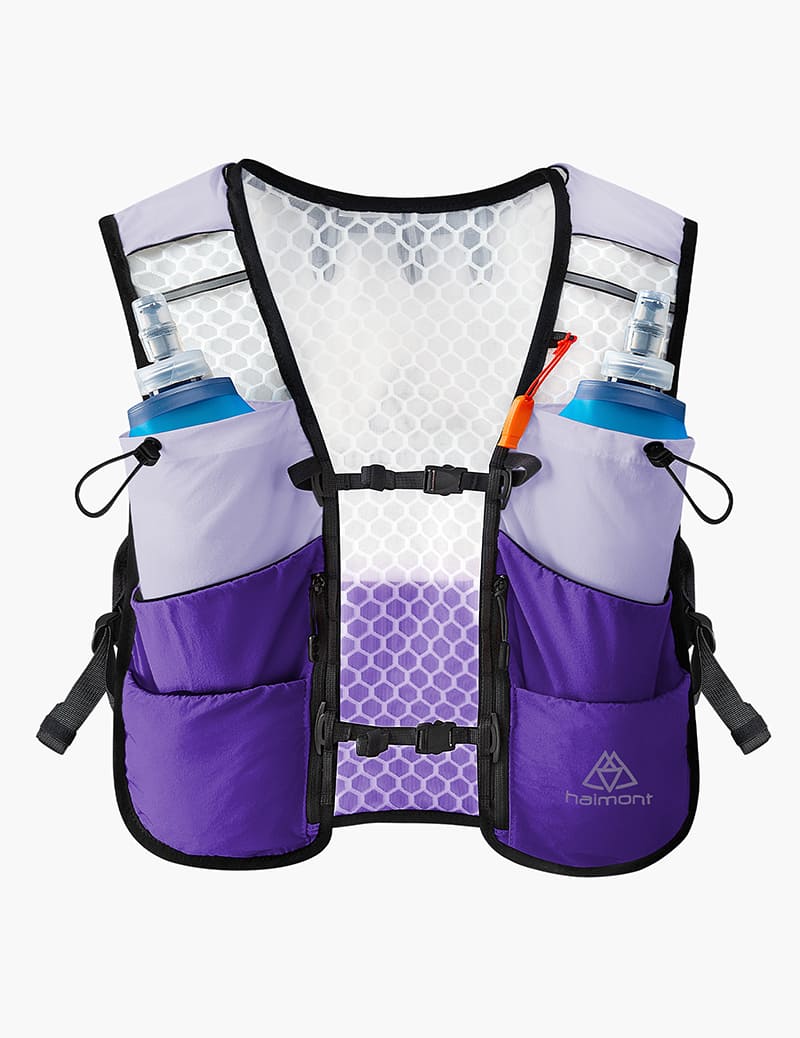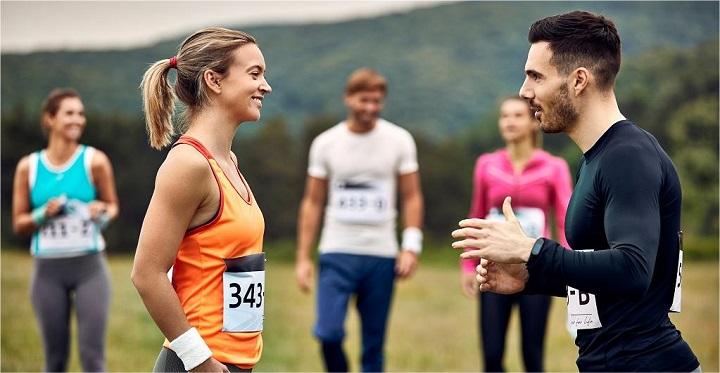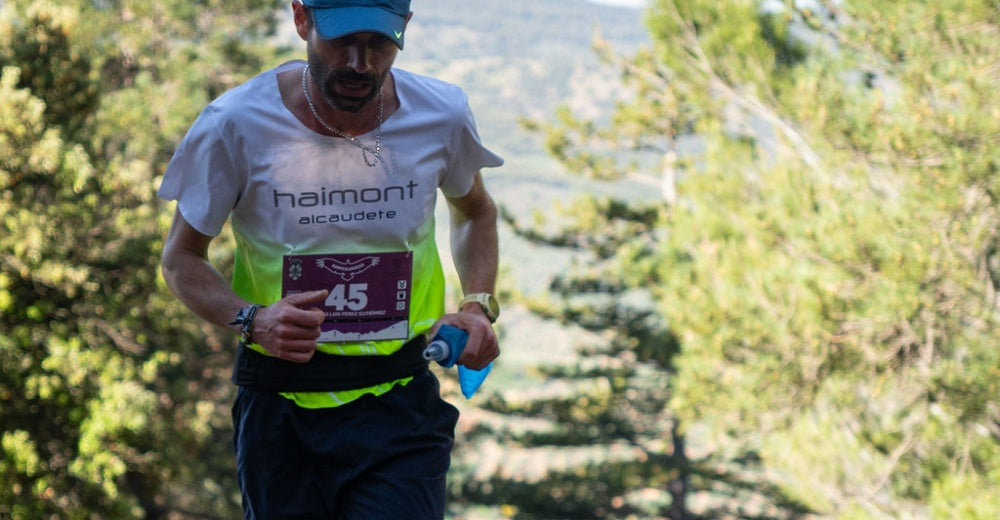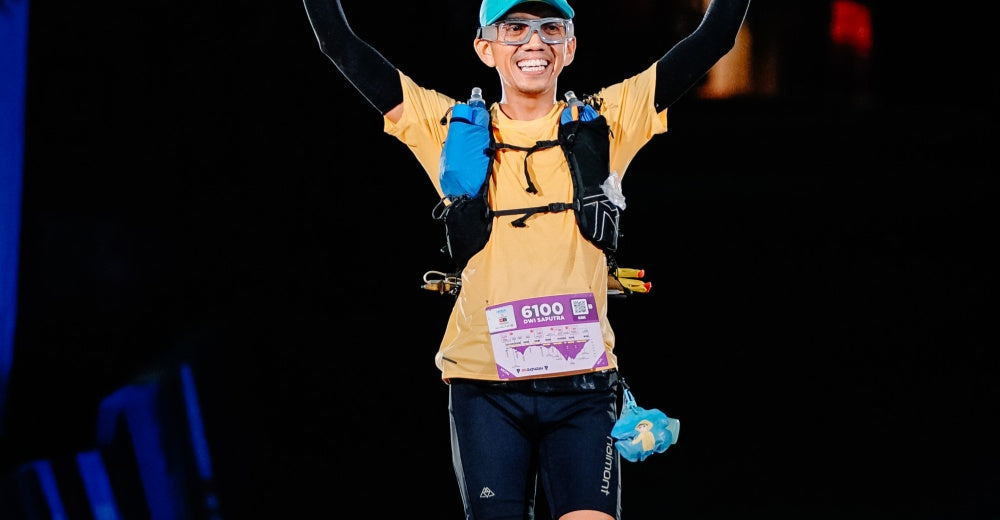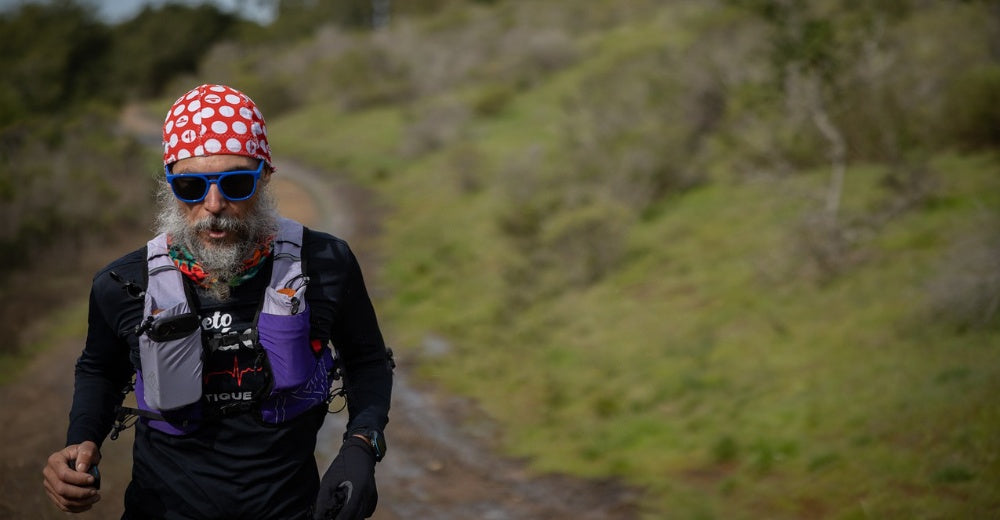Table of contents
Spring is one of the most active seasons for trail running enthusiasts. As the temperature rises and the mountains and fields recover, training and competition enter a golden period. However, trail running has extremely high requirements for physical fitness and endurance. A scientific diet plan can not only improve the training effect, but also help you perform at your best in the competition. Haimont not only provides you with professional sports equipment, but also hopes that you will be fully prepared in nutrition to make every run more efficient and safer.
Dietary goals during the spring training period
Training goal I: Enhance aerobic endurance-Carbohydrate-dominated, full tank
Theoretical basis
Trail running mainly relies on aerobic metabolism for energy supply. In long-distance jogging, climbing training, and Back-to-Back classes, muscles continue to consume glycogen. Insufficient reserves → easy to "hit the wall" early or interrupt training.
Daily intake recommendations
- Running < 10km/day: 4-5g carbs/kg body weight.
- Running > 15km/day or with climbing: 6-7g carbs/kg body weight.
Example (55kg female runner, weekly running 50km+)
- Daily intake of 330-385g carbohydrates, equivalent to: 1 bowl of oatmeal (45g).
- 2 slices of whole wheat toast (30g).
- 1 banana (30g).
- 1 bowl of quinoa or brown rice (60g).
- 1 sweet potato (35g).
- Additional energy gels (60g) during training.
Recommended combination
|
Time Period |
Food Pairing Recommendation |
Purpose |
|
2 Hours Before Training |
Sweet potato + Eggs + Yogurt |
Low-GI carbs + Easily digestible protein |
|
During Training (>90 min) |
1 energy gel every 45 minutes |
Stable energy supply to prevent "hitting the wall" |
|
Within 30 Minutes Post-Workout |
White bread + Honey + Whey protein powder |
High-GI carbs + Protein for rapid recovery |
|
Before Bed |
Warm milk + Whole wheat crackers |
Replenish glycogen and prevent overnight catabolism (muscle breakdown) |
Practical Tips
- It is recommended to have a "high-carbon dinner" (such as quinoa rice + fried eggs + vegetables) the day before the weekend LSD.
- You can put 1 energy gel + 1 bag of raisins in the chest pocket of the trail running vest pack for instant sugar replenishment on the way.

Training goal II: Improve muscle endurance & fatigue resistance - protein + antioxidant nutrition
Theoretical basis
Trail running involves a lot of uphill explosive power + downhill muscle stretching (braking contraction), muscle micro-injury is common, and intensive repair is required.
Daily intake recommendations
- Normal training day: 1.2-1.5g/kg body weight.
- Strength training + trail combination day: 1.6-1.8g/kg body weight.
- 55kg female runners about 66g - 100g protein per day.
Recommended food list
- Animal: chicken breast, fish, beef, eggs, whey protein powder.
- Plant: tofu, chickpeas, quinoa, nuts.
- Recovery bonus: protein powder containing branched-chain amino acids (BCAA) or glutamine.
Food arrangement
|
Time Period |
Meal Suggestion |
Key Benefits |
|
Breakfast |
Oats + Milk + Eggs |
Slow-release carbs + protein combo |
|
Post-workout (30min) |
Whey Protein + Banana Smoothie |
Fast recovery (protein window) |
|
Dinner |
Salmon + Quinoa + Stir-fried Broccoli |
Anti-inflammatory fats + high-quality protein |
|
Before Bed |
Soy Milk + Nuts |
Slow-release protein for overnight recovery |
Practical Tips
- If you train early, you can bring Haimont soft water bottle with self-adjusting protein drink (mix whey + cold water + fruit puree in a shaker).
- For muscle soreness, you can supplement with effervescent magnesium tablets before and after training to improve recovery efficiency.
Training goal III: Enhance the immune system & anti-inflammatory ability - micronutrients must be in place
Theoretical basis
In spring, the temperature difference between day and night is large, pollen allergies are frequent, and running volume is superimposed, which can easily lead to colds and fatigue accumulation. Focus on supplementing anti-inflammatory and antioxidant nutrients.
Supplementation points
|
Nutrient |
Function |
Food Sources |
|
Iron |
Prevents sports anemia |
Liver, lean beef, spinach |
|
Magnesium |
Relieves muscle fatigue/cramps |
Dark chocolate, pumpkin seeds |
|
Zinc |
Supports immunity |
Seafood, nuts |
|
Vitamin C |
Antioxidant, enhances iron absorption |
Oranges, kiwis, bell peppers |
|
Vitamin D |
Immunity & bone health |
Sunlight, salmon, egg yolks |
Practical supplementation method
- Add a kiwi fruit + nut bowl to breakfast on training days.
- Twice a week salmon + spinach salad + brown rice.
- Moderate intake of honey, turmeric, and onions have natural anti-inflammatory effects.
- Female supplementation suggestions.
- If you have irregular menstruation or anemia, consume red meat twice a week + vitamin C.
- You can use a cycle tracking app (such as Clue) to adjust your diet and training status.
Training goal IV: Improve gastrointestinal adaptability-"eating training" is also important
Theoretical basis
During trail running, the stomach and intestines are often uncomfortable due to vibration, tension, temperature changes, etc., resulting in the inability to eat and replenish normally. Spring is the golden period for training gastrointestinal tolerance.
Practical strategy
- During training: simulate replenishment every time LSD → consume 1 energy gel + 1 mouthful of water every 45-60 minutes.
- Before training: experiment with different breakfasts (bread + jam/rice balls + fried eggs) to find the "safest" combination.
- Stimulant food test: such as whether coffee + energy gel can be used at the same time, spring testing is much better than having problems on the day of the competition!
Haimont auxiliary suggestions
- Use the front soft bottle pocket of Haimont trail running backpack to quickly get water/electrolyte drinks.
- Put energy gels into the small bag on the chest of the backpack, salty ones on the left (salt tablets/salt supplement gels), sweet ones on the right (sugars).
Carbohydrate and electrolyte intake table for trail running of different distances
|
Distance |
Estimated Time |
Carb Intake Target |
Electrolyte Intake Target (Sodium) |
Fueling Strategy |
|
10-20KM (Short) |
1-3 hours |
30-40g per hour |
200-300mg per hour |
Energy gels + water; add salt tablets (1/hour) in heat. |
|
20-50KM (Medium) |
3-8 hours |
40-50g per hour |
300-500mg per hour |
Soft flasks + energy gels + sports drink; occasional snacks (rice balls/fruit puree). |
|
50-100KM (Long) |
8-20 hours |
50-60g per hour |
500-700mg per hour |
Multi-source carbs (gels + bars + solid food); salt tablets/electrolyte powder hourly. |
|
100KM+ (Ultra) |
20+ hours |
50-70g per hour (add real food as needed) |
600-800mg per hour |
Backpack mix: gels + bread + rice + savory snacks; consistent salt tablets/electrolyte drinks. |
Formula for carbohydrate intake (for general endurance runners)
- Weight (kg) × 0.7~1.0 = grams of carbohydrate required per hourElectrolyte focus.
- Heat, high humidity, and altitude changes will accelerate electrolyte loss, and the amount of supplementation should be adjusted dynamically. Timing of real food integration.
- For events longer than 3 hours, it is recommended to eat real food, such as rice balls, potato cubes, and energy biscuits, to reduce the stomach burden caused by eating energy gels alone..
Small equipment recommendations (for use with Haimont trail running backpacks)
- Front pocket for energy gels, salt pills.
- Side pocket for soft water bottles (with electrolyte drinks).
- Main compartment for energy bars, small rice balls, spare salt tablets.
- Set an alarm every hour to remind you to eat/rehydrate to prevent omissions!

Although dietary theory provides us with clear directions, each trail running runner's physical response, training intensity and taste preferences are different. For this reason, many top runners will repeatedly try and adjust their dietary strategies during spring training to find the "energy formula" that suits them best. Let's take a look at several well-known runners from the international trail running circle and see how they achieve endurance improvement, fatigue recovery and gastrointestinal adaptation through diet during the spring training period. These real cases not only show the training details of professional runners, but also provide us with many dietary practices that can be used for reference.
Courtney Dauwalter: The high-carbon strategy of the queen of minimalism
Background: American legendary female trail running runner, double champion of UTMB & Western States.
Keywords: ultra-high carbon water + gastrointestinal training + energy cola party.
"My daily energy source is almost all carbohydrates, especially rice, pasta, and corn flakes. On training days, I eat oats + nuts + honey for breakfast, a lot of white rice + roasted vegetables for lunch, and drink sugary drinks immediately after training."
-Courtney mentioned in an interview: "I even try energy gummies, Pepsi and small cakes during training, because the stomach must be able to eat these during the competition."
Corresponding dietary goals: enhance endurance and aerobic energy supply.
Haimont application point suggestions
- Small bags with energy gummies and gummies can be designed, suitable for chest/side pocket storage.
- Launch trail running version of training camp recipe packs (such as rice dry food, cocoa quantity drink powder).
Kilian Jornet: The "naturalistic energy strategy" of the mountain king
Background: Spanish world trail running superstar, Skyrunning multiple record holder
Keywords: natural food, iron supplement awareness, gastrointestinal experiment
"I don't eat processed food very much, and prefer to use whole grain bread, honey, milk and dried fruits for training period energy supply.
During the spring training phase, I pay special attention to iron supplementation + antioxidants, so I eat a lot of spinach, beans, oranges and marine fish.
And I do "gastrointestinal training" every spring - testing which energy gels I can tolerate and which ones give me stomach pain after drinking."
Corresponding dietary goals: anti-fatigue + gastrointestinal adaptation training
Haimont application point suggestions
Emphasis on natural food storage: moisture-proof pouches + quick access interfaces are included in the running vest pack design
A Haimont × Mountain Recipes joint dry food bag (bean + dried fruit combination bag) can be released
Jim Walmsley: The protein repair secrets of the high-intensity male god
Background: American men's trail running record holder, Western States 3 consecutive champions
Core keywords: high-volume training + fine protein control + synchronized electrolyte supply
"I train more than 160 kilometers a week, and spring is a critical period for me to lay the foundation. During the training period, I consume more than 150g of protein every day, and pay special attention to the repair window of '30 minutes after running'.
I use protein shakes + cereal bars as a snack after training, which is easier for the stomach to accept. I will carry electrolyte water with me during training, especially on hot days in spring."
Corresponding dietary goals: muscle repair + synchronized rehydration
Haimont application point suggestions
- Specialized protein powder dry bag + quick-access water bottle position in the backpack.
- Provide protein powder carry-on bag & sports drink tablet set as event training auxiliary gift package.
Dietary adjustment one week before the race: balance between lightness and energy storage
Most trail running races in spring are located in mountainous areas with natural altitude fluctuations and large temperature fluctuations, which puts extra requirements on the "frequency modulation" of the energy system. The key to dietary adjustment one week before the race is not to "eat more" or "eat lighter", but to reserve enough energy and keep the body running light. In other words, it means: energy storage without stagnation, light without loss of strength.

Day 7-Day 4: Nutrition "adjustment period" - cleansing the intestines, anti-inflammatory, stabilizing blood sugar
The goal of this stage is to reduce the burden on the stomach, improve absorption efficiency, stabilize blood sugar fluctuations, and lay a good foundation for the "carbohydrate loading" in the next few days.
Recommended strategies
- Reduce high-fat fried foods, choose mild cooking methods such as steaming, boiling, and stewing.
- Increase natural antioxidant foods, such as blueberries, red dates, kiwis, and dark green vegetables.
- Control sugar and caffeine intake (especially for those with sensitive stomachs).
- Drink ≥ 2.5L of water daily, and add electrolyte tablets (such as Haimont Wild Running Pack with instant tablets).
Recommended menu examples
- Breakfast: Quinoa porridge + eggs + apple slices.
- Lunch: Brown rice + broccoli + beef stew with potatoes.
- Dinner: Purple sweet potato + steamed fish + fried spinach.
- Snack: Low-sugar yogurt + chopped nuts.
Day 3-Day 1: Carbohydrate loading period-"fill the tank" instead of filling it with gasoline
Carbohydrate loading does not mean eating noodles and sweets like crazy, but gradually increasing the daily carbohydrate ratio to 60%-70% of total calories and reducing fat intake to avoid affecting muscle sugar storage efficiency.
Key points
- Focus on complex carbohydrates (brown rice, oats, sweet potatoes, pasta) and avoid overeating.
- Consume carbohydrates in 6-7 meals a day to improve muscle sugar reserve efficiency.
- Keep a light diet at night to avoid adding extra burden to the stomach and intestines.
- The intensity of training has dropped significantly, and the calories should not increase significantly to avoid "reserves turning into burdens".
Daily diet distribution chart during the carbohydrate loading period
|
Recommended Intake |
Explanation |
|
|
Breakfast (within 1 hour of waking) |
Large portion of carbs + moderate protein Example: Oatmeal + honey + banana + boiled egg |
Focus on low-fat, high-carb foods to kickstart daily energy |
|
Morning Snack (2-3 hours after breakfast) |
Simple carb snacks Example: Rice cakes, toasted white bread, low-fat yogurt |
Maintain stable blood sugar levels, prevent energy dips |
|
Lunch |
Moderate-high carb main course + lean protein Example: Pasta, white rice + chicken breast + small portion of vegetables |
Carb portion > protein portion, limit fat intake |
|
Afternoon Snack (2 hours after lunch) |
Fruit or liquid carbs Example: Fruit puree, diluted juice, low-sugar sports drink |
Quick glycogen replenishment, avoid blood sugar fluctuations |
|
Dinner |
High-carb meal + small protein portion Example: Pasta + poached fish fillet + mashed pumpkin |
Continue glycogen storage for overnight recovery |
|
Bedtime Snack (optional) |
Small easily digestible carbs Example: Half a banana, one slice of white bread |
Prevent nighttime blood sugar drop, aid recovery |
Reference for carbohydrate ratio
- Carbohydrates account for about 70%-75% of total daily calories.
- Control fat intake (accounting for <20%).
- Protein supplementation (about 15%).
Special attention
- Try to choose low-fat, easily digestible carbohydrate sources (white rice, white flour, oats, cooked pumpkin, potatoes).
- Reduce fried, high-fiber, high-fat foods (to prevent gastrointestinal burden).
- Keep drinking enough water (help glycogen synthesis and storage).
Practical advice: You can carry small packages of energy bars, whole wheat biscuits, and dried fruits (put them in the front pocket of the Haimont trail running vest pack) as a lightweight and efficient carbohydrate snack tool
The day before the game: stay familiar and refuse to take risks
The key words for diet the day before the game are: "Don't try new foods" and "Keep regular and rhythmic."
Specific suggestions
- Eat meals that you are familiar with and that digest smoothly.
- Less oil and fiber (reduce intestinal burden).
- Normal intake of carbohydrates for breakfast and lunch, reduce the amount of dinner and eat early (recommended before 18:30).
- Before going to bed, you can take a small amount of complex carbohydrates, such as oatmeal + milk, which will help you fall asleep peacefully.
- No overeating, and it is not recommended to take unfamiliar supplements or drugs.
Special reminder: You can pack tomorrow's energy gels, electrolyte tablets, soft flasks, etc. in advance the night before the game (Haimont backpacks can be loaded in partitions for easy access) to avoid panic in the morning.

Elite runners share
Jim Walmsley (USA):
"Three days before the race, I will enter the 'energy stacking mode'. During the day, I will eat pasta and bread as my main food, and at night, I will control my diet to baked sweet potatoes and a little protein. The most important thing is not to eat unfamiliar food. Even when I compete in Europe, I bring my own carbs."
Courtney Dauwalter (USA):
"I won't eat too fancy. Usually, I will eat rice + eggs + a little carrot the day before. I don't believe in supplements, but I will bring two energy cola gels and eat them before the first uphill of the race to refresh and boost my energy."
Eating rhythm on race day: Energy saving does not mean running on an empty stomach
The morning of race day, the air is somewhat tense and exciting. Many runners think that "light on an empty stomach" is a strategy to save energy, but ignore that trail running is an endurance battle that requires "continuous eating". Energy saving does not mean running on an empty stomach. What you need to do is not to control the amount of food, but to establish a rhythm system of stable supply and gradual release of energy.
Golden breakfast strategy before the race (3 hours before the race)
The first meal on the day of the race is the key to "igniting the engine".
Ideal breakfast goals
- Provide slow-release carbon water (help maintain blood sugar).
- A small amount of protein (reduce hunger).
- Low fat and low fiber (avoid gastrointestinal burden).
Recommended breakfast combination
- Oatmeal porridge / white porridge / white bread.
- Boiled eggs / a small amount of cheese.
- Ripe bananas (potassium supplement).
- A small amount of black coffee (for habitual people).
Note:
- Do not eat raw, cold, fresh and unfamiliar food.
- Avoid eating any solid food 1 hour before the game (to avoid stomach discomfort).
During the game: "Energy process" of phased intake
0-1 hour: intervene in the energy supply in advance
Even if you are not hungry, you must "tell your body" in advance: I am replenishing energy, don't sneak to reserve glycogen.
Recommendations:
- Eat the first energy gel (containing 30g of carbs) within 30 minutes after the race.
- Take a few sips of water (do not eat gels on an empty stomach!).
You can use the front chest pocket of the Haimont trail running backpack to quickly access energy gels, which is convenient for blind access
1-3 hours: Enter the "sustained release" stage
Rhythm recommendations:
- Take an energy gel or an equivalent amount of carbs (30-40g) every 40-50 minutes.
- Drink water + electrolytes every 30 minutes (sodium, potassium, and magnesium are recommended).
- Increase the frequency of salt pill intake in hot or mountain races (1 per hour).
Alternative options: small pieces of rice balls, sugar-free soft bread, fruit puree, energy bars (small amounts and multiple times)
More than 3 hours: Glycogen deficiency risk period, "planned eating" is required
Long-distance trail (such as 50K, 100K) is prone to suddenly "hitting the wall" after 3 hours. The key to avoiding collapse is: eat in advance, not wait until you are hungry to eat.
Replenishment suggestions:
- Continue to maintain 30-50g of carbohydrates per hour.
- Add "real food" to replenish in stages (salty crackers, rice balls, boiled potatoes, beef jerky, etc.).
- Use the Haimont backpack main compartment to quickly switch food types (soft candy → salty crackers → staple food).
Common mistakes on race day:
|
Misconception |
Correct Approach |
|
Eating only when hungry |
Refuel in advance, anticipate energy deficits |
|
Consuming too many gels at once |
Small, frequent doses + hydrate simultaneously |
|
Neglecting electrolytes |
Supplement with electrolyte pills/drinks hourly |
|
Relying solely on sweets |
Rotate protein + carbs + savory snacks to avoid stomach fatigue |
Elite runners share
Ragna Debats (Netherlands)
"I never wait for my stomach to growl before eating. I will eat the first energy gel 1 hour in advance and then dilute it with water. If my stomach is in good condition, I will eat fruit puree and soft bread in turn to keep my rhythm."
François D’Haene (France)
"I prefer to eat real food during the race. Prepare rice balls and small pieces of dry bread with ham. I will mark the time of eating on my wristband before the race so that I will not be disturbed by the rhythm."
Diet is not a burden, but a source of energy for you to conquer the mountains.
In the trail training and competition in spring, scientific eating and supply strategies, like trekking poles, are key tools to support your rhythm and maintain your state. Eating right and steadily is not just to replenish calories, but also to keep the body efficient and stable in every climb and every descent. Trail running is not a battle of hard support, but a journey in sync with the rhythm of nature.
You need not only courage, but also methods.
Diet is not a burden, but a source of energy for you to conquer the mountains.
Haimont will embark on every energetic mountain journey with you.



